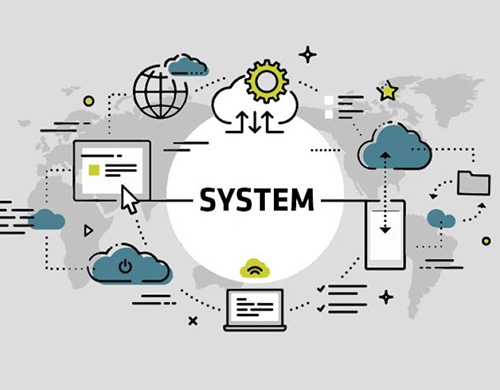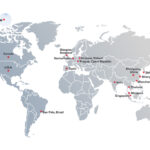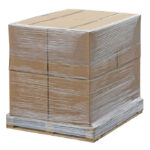Take a Systems Approach to Packaging
Whether you believe that the circumstances of your life and the people you meet are part of a grand plan or happenstance, there is a ripple effect from every action that you take— just ask a teacher in a roomful of kindergarteners. At Supply Source we humbly suggest that you remember this truth when you’re deciding on the best means to package your product. When you are deciding how to maximize your packaging performance, we suggest you take a systems approach.
Manufacturers, warehouse workers, shippers, retailers, delivery people, and customers will all be impacted by the choices you make on how best to package your product. Perhaps packing peanuts is the most cost-effective, but what if your customer hates the waste? Packing as much as possible into one container may save money and time, but what will the extra weight do to shipping costs?
From primary to secondary packaging, performance decisions are not made in a vacuum and every tweak to what’s done getting a product from point A to point B can have impacts farther down the supply chain. The choices made in packaging impact:
- transportation;
- material handling in plants, warehouses, and stores;
- waste management in terms of recycling, reuse, and damage risk;
- and capital costs for all of the above as well as for the material.
Supply Source has been in the packaging business long enough to be familiar with what happens along the supply chain as packaging changes are made and we stand ready to help our customers, whether small operations or fully automated manufacturing lines, make the best decisions. Our design experts can help you select and design every facet of your product’s packaging.
Primary and Secondary Packaging Options
Most products are put into some type of packaging from the time they are manufactured. Pills go into blister packs, lightbulbs are put into cardboard sleeves, and rolls of paper towels come wrapped in plastic. This primary packaging is key to how protected a product will be as it journeys from manufacturer to consumer.
After the primary packaging of a product, it goes into secondary packaging which is how it will be transported from the manufacturer to the end user. Previously this meant products would be put into large containers that were eventually dropped at a retail location where they would be unpacked and put on store shelves. With the explosion of e-commerce, there’s a new wrinkle. Products may ship directly to customers.
Throwing a bunch of lightbulbs in a bag would not be successful, although on the surface it would likely be cheaper and less labor intensive. Here’s where we dig deeper. A bulb in a bag would break, so now return and replacement costs have to be added to the equation, meaning more packaging, more shipping, and more production. Not to mention the exodus of unhappy customers. This is a simple example, but at Supply Source we know how to take this same examination into all types of packaging situations.
Matching Company Missions to Packaging
 Protection is just part of the reason that a particular packaging is chosen. Let’s say for shipping you choose to change from a box to a poly bag. We look at how this change would impact your employees and your labor costs — is it easier to use, and does it take less time? Are fewer materials like tape, labels, and filler required? Would shipping costs be diminished? Would your product arrive intact or would your refunds and returns for damaged goods increase? Would your customer appreciate a reusable bag, or would they prefer a recyclable box? The decision on packaging touches all of these areas and people, which is why it’s essential to explore all options and be thoughtful about the choices you make.
Protection is just part of the reason that a particular packaging is chosen. Let’s say for shipping you choose to change from a box to a poly bag. We look at how this change would impact your employees and your labor costs — is it easier to use, and does it take less time? Are fewer materials like tape, labels, and filler required? Would shipping costs be diminished? Would your product arrive intact or would your refunds and returns for damaged goods increase? Would your customer appreciate a reusable bag, or would they prefer a recyclable box? The decision on packaging touches all of these areas and people, which is why it’s essential to explore all options and be thoughtful about the choices you make.
In exploring a company’s packaging system, we look into its mission and goals, as well as its costs and functionality. If a company wants to be known for its sustainability efforts its packaging should support that mission. There are also considerations for branding and promotion that dictate everything from the color and wording of the package to its distinctive shape. The ease of opening and disposal options factor in as does the functionality. For instance, some products need to be in climate-controlled packaging.
When Supply Source helps our clients explore the best options for shipping, we consider these company nuances as well as the goals of the entire organization. A packaging strategy determines the resources and systems that are used to meet a company’s objectives and it needs to align with the goals of every department. An operations department looks for efficiency while marketing wants brand recognition, and customer service wants fewer returns and irate customers. Packaging should respond to all of these objectives.
Modernize Packaging
Through time and experience, manufacturers learn what packaging works best, and making changes is not easy. Would you still buy Captain Crunch cereal if it came in a plastic tub and didn’t have the Captain’s likeness emblazoned on it? But that doesn’t mean change is impossible. Sometimes modern technologies can offer a better solution than what has been traditionally used.
For instance, styrofoam might always have been the choice for packaging appliances, but foam works just as well if not better in most instances and is less environmentally harmful. Foam also takes up less space on a warehouse floor.
At Supply Source, we help our clients explore all their options and conduct cost comparisons so the right fit for the product is also the right fit for profitability. That one box that holds your product will go through many hands. That’s why it’s important to look at your company’s packaging as a system and not just that one box, in order to improve your delivery, your customer relationships, and your bottom line. Contact us to start the conversation on improving your packaging.




Recent Comments